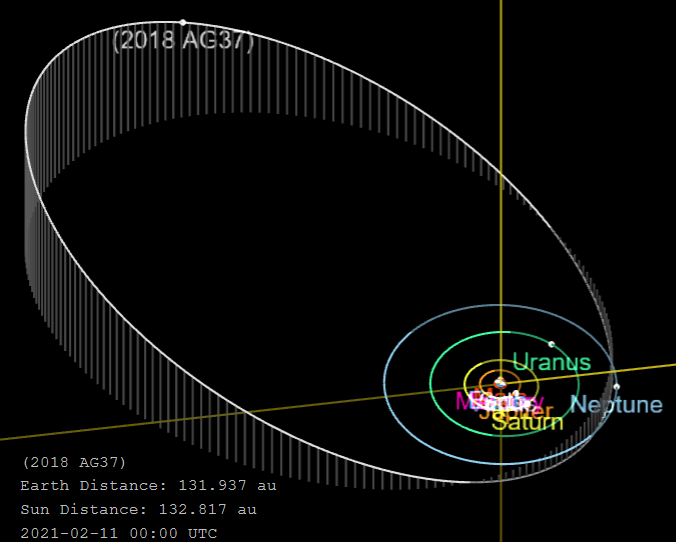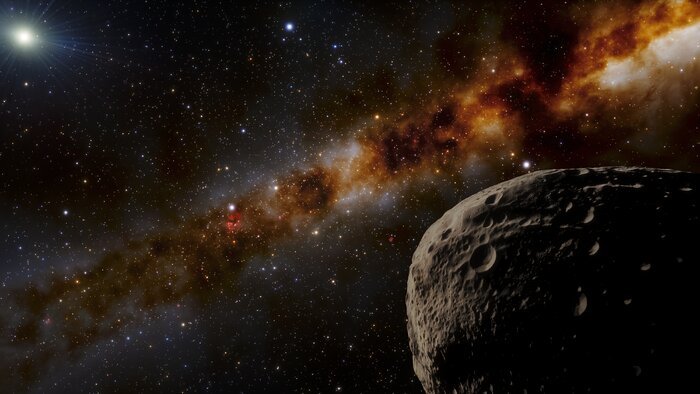When it comes to defining our solar system, there are sort of two versions. The one we know well consists of the Sun, eight planets (including us!), a big ol' asteroid belt, and a couple hundred moons that are mostly found around the gas giants Jupiter and Saturn.
But this part of the Solar System is really just the inner ring—though it contains most of the action, the entire system is much larger. And more mysterious. All sorts of asteroids, comets, and dwarf planets are orbiting the Sun, ten times farther out that even Neptune, the most distant planet. We're learning more about these objects all the time. Meet FarFarOut.
No, that's not some cool phrase your aunt picked up while surfing in California in the 1960s. FarFarOut is the not-so-technical name for 2018 AG37, a small dwarf planet that is now officially the most distant object in the Solar System.
Home of the 1,000 year year!
FarFarOut measures about 400 kilometres (250 miles) across. That's about the length of the Grand Canyon or the distance between Ottawa and Toronto. So not that big in planet terms—its much smaller than the Moon even—but still big enough to be seen. Barely.
It was first discovered in 2018 (that's why it was named 2018 AG37), but it took a couple years of observations for astronomers to confirm what they were looking at and how far (far) out it was. Turns out? Really far out!
FarFarOut is currently 132 AU from the Sun. An AU, or astronomical unit, is the distance between Earth and the Sun, or 149597870.691 km (30818688.0436998 miles). So FarFarOut is 132 times than distance. At this distance and its current speed, astronomers estimate that it takes about 1,000 years to complete one orbit around the Sun.
Oval, elliptical orbit

A look at the estimated orbit of 2018 AG37. (Wikimedia Commons)
But that is not the only irregular thing about this dwarf planet. While one of its years may be around 1,000 of ours, it at least sees a LOT of the solar system during that time. This is because its orbit is an elliptical oval.
Our orbit is a flat circle. We stay about the exact same distance from the Sun the entire time. But FarFarOut's orbit starts very far out—the farthest point is about 175 AU—but ends up not so far out. In fact, the dwarf planet even dips inside Neptune's orbit for a bit. Its orbit is also at an angle, meaning it starts "high above" the solar system, before briefly dipping beneath it.
Need to learn more
At least, this is what astronomers think is happening out there. The truth? FarFarOut is so far, far out—and so small and slow moving—that even two years of observations can't tell researchers exactly where it is heading and when. The dwarf planet could complete its orbit in 800 years or less. Scientists need more time to observe it.
But they do know that it is the farthest object that they've ever discovered orbiting the Sun.
Will something even farther out be discovered someday?
Something FarFarFarOut? We will have to wait and see!
 An artist's impression of a day in the life of FarFarOut. (NOIRLab/NSF/AURA/J. da Silva)
An artist's impression of a day in the life of FarFarOut. (NOIRLab/NSF/AURA/J. da Silva)









